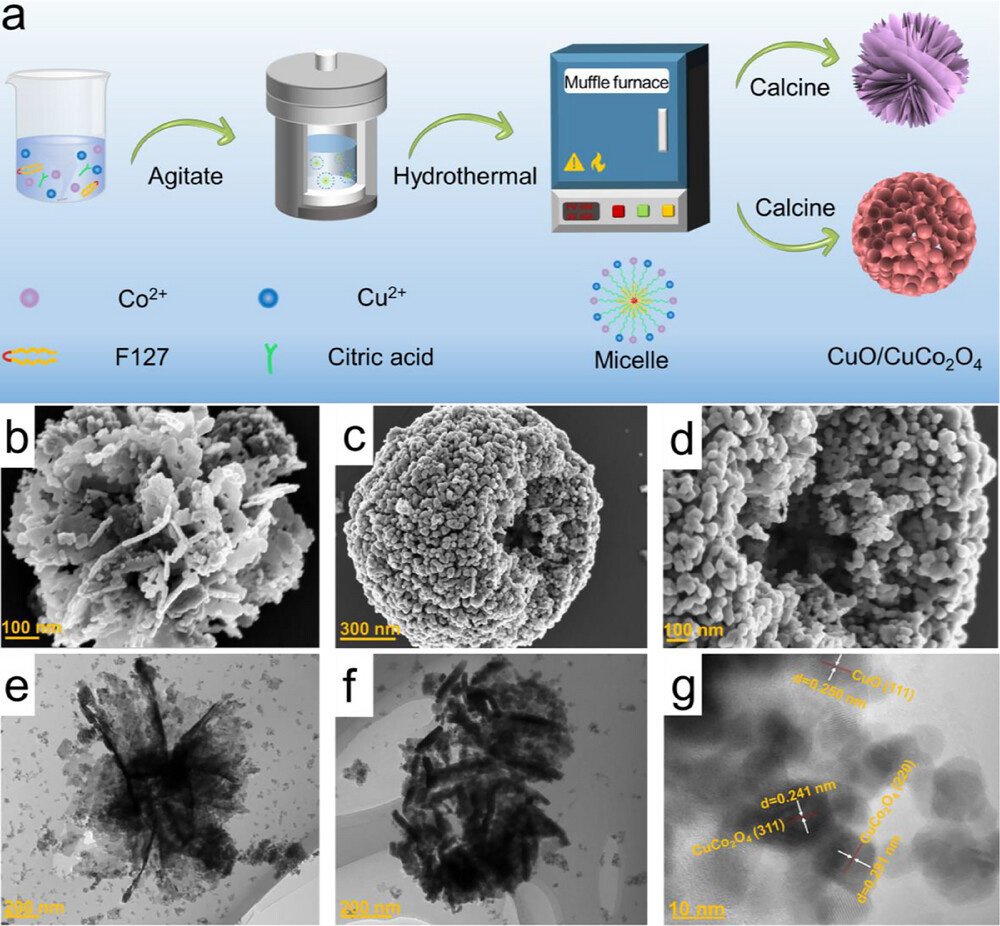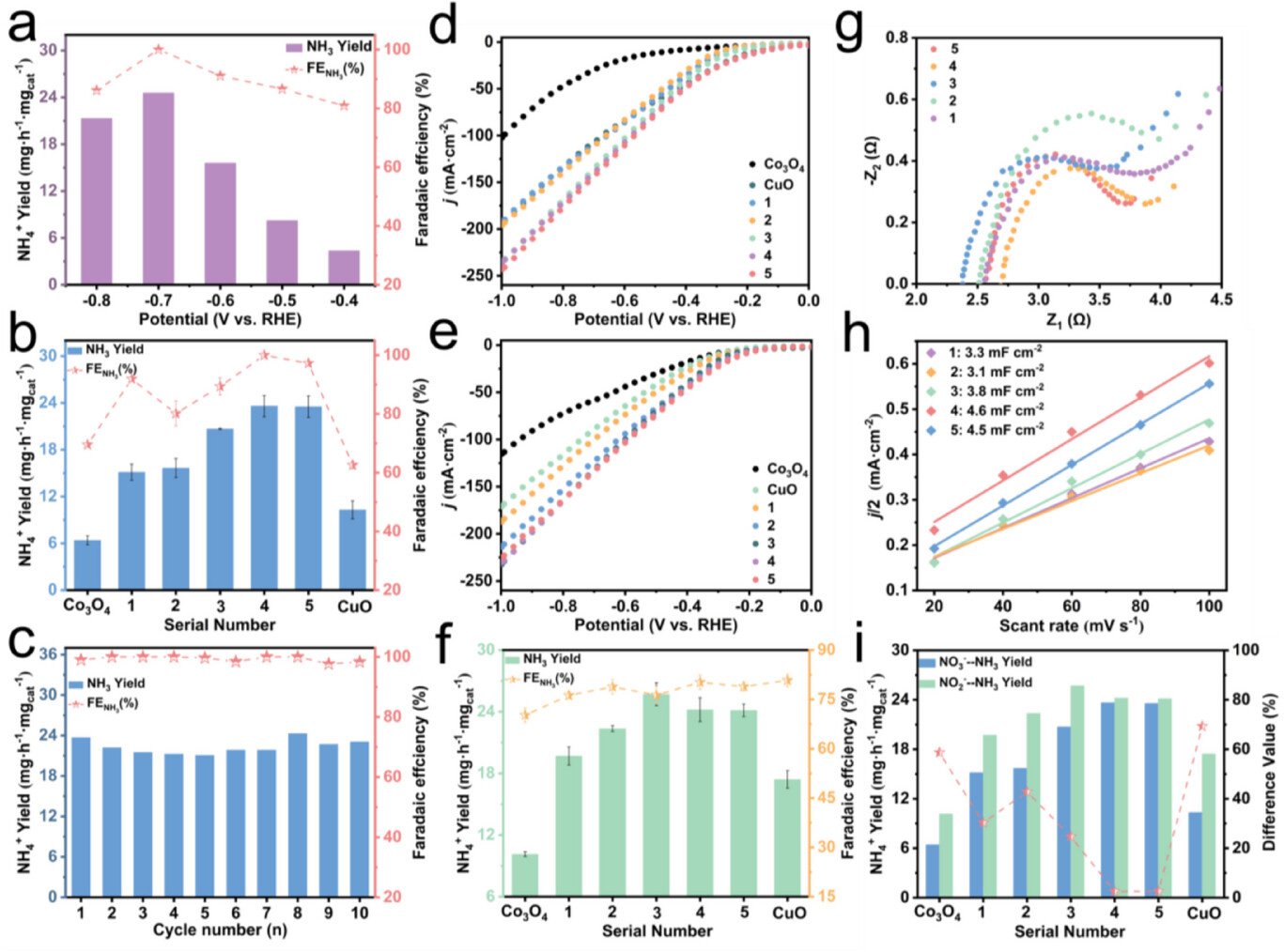A research team led by Distinguished Professor Hao Li at WPI-AIMR, Tohoku University has reported new findings on copper/cobalt-based catalysts that improve the efficiency of electrochemical nitrate reduction. The study addresses a key rate-limiting step in the conversion of nitrate (NO₃⁻) to ammonia (NH₃), offering a refined approach to green ammonia production and nitrate wastewater treatment.
Electrochemical nitrate reduction (NO₃⁻RR) is emerging as a viable strategy for producing ammonia under ambient conditions while also mitigating nitrate pollution. However, the multi-step process is often hindered by the slow conversion of nitrate to nitrite (NO₂⁻), which can significantly reduce overall efficiency.
In this work, the researchers synthesized spherical and nanoflower-like CuO/CuCo₂O₄ catalysts using an emulsion hydrothermal method. The design promotes small-particle stacking and leverages the structural benefits of both CuO and Co₃O₄. The catalysts were shown to facilitate the sequential reaction steps, effectively connecting NO₃⁻→NO₂⁻ and NO₂⁻→NH₃ in a unified system.

One of the study's central findings is the formation of monomeric copper during electrolysis. This newly formed Cu interacts with CuCo₂O₄ to promote the rate-limiting NO₃⁻→NO₂⁻ step. As a result, the same level of ammonia production was observed in both nitrate and nitrite reduction reactions.
Under neutral conditions at −0.70 V (vs. RHE), the Cu/CuCo₂O₄ catalyst achieved a peak ammonia yield of 24.58 mg h⁻¹ mgcat⁻¹ in nitrate reduction, alongside a Faraday efficiency of 100%. When NO₂⁻ was used as the substrate, the system achieved a nearly identical yield of 24.34 mg h⁻¹ mgcat⁻¹.
"The ability of Cu and CuCo₂O₄ to work in tandem helps us better understand how to design more effective catalysts," said Professor Hao Li. "Our findings provide not only experimental results but also mechanistic insights that may guide future catalyst development."

The team has made the experimental and computational data available through the Digital Catalysis Platform, a database developed by the Hao Li laboratory. These results contribute to ongoing efforts to optimize catalysts for sustainable ammonia production.
Future work will focus on extending the catalyst's performance to industrial settings, including long-duration tests and reactor-scale implementation, while deepening the mechanistic understanding through operando spectroscopy and modeling.

- Publication Details:
Title: Advancing Electrochemical Nitrate Reduction: Overcoming Rate-Limiting Bottlenecks with Copper/Cobalt Catalysts
Authors: Jin Li, Yuan Wang, Xiujing Xing, Yang Wang, Wei Xiong, and Hao Li
Journal: Advanced Functional Materials






